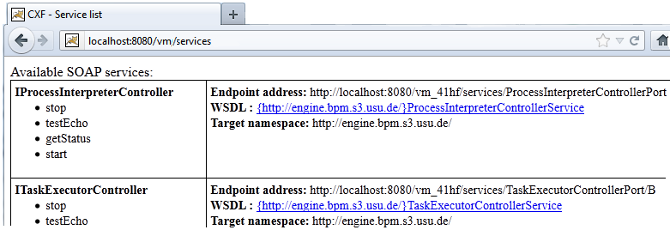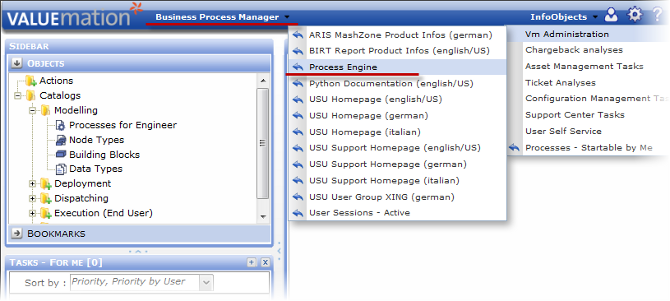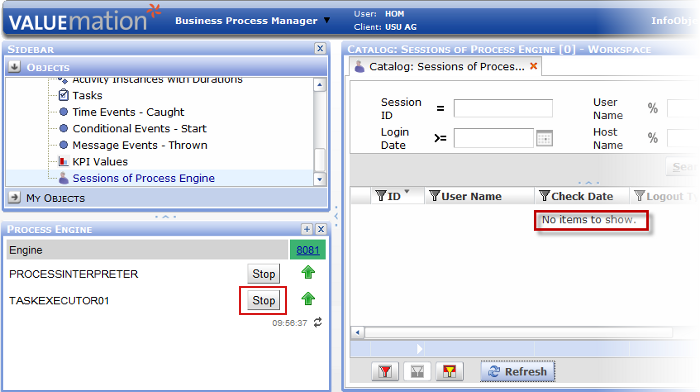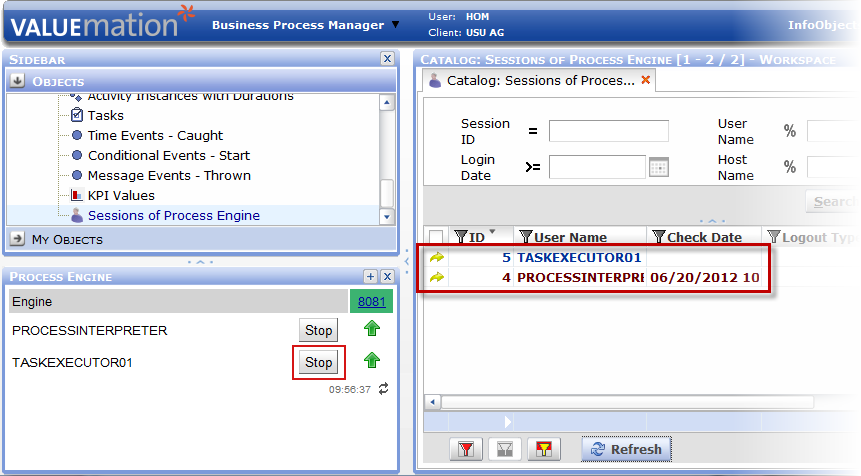How to set-up and start Process Engine on Tomcat
WEB-INF/web.xml: load-on-startup
For the Process Engine to launch automatically on webserver startup, modify "WEB-INF/web.xml": uncomment "load-on-startup" for servlet "cxf". Process Engine will thus be loaded when the servlet container starts.
<servlet>
<servlet-name>cxf</servlet-name>
<display-name>cxf</display-name>
<description>Apache CXF Endpoint</description>
<servlet-class>org.apache.cxf.transport.servlet.CXFServlet</servlet-class>
<load-on-startup>3</load-on-startup>
</servlet>
Note that "cxf" servlet must be loaded after servlet "vmweb", which is specified by the value "3".
WEB-INF/classes/ProcessEngineConfiguration.json: url
Define URL by which one access services available on a server.

Node definition in configuration file
E.g. when url to login is http://localhost:8080/vm/vmweb then node url to be in configuration is http://localhost:8080/vm/services
Node url returns available services:

Available services
Start tomcat and login
- Start tomcat
- Login to the URL used in the setup, e.g. http://localhost:8080/vm/vmweb
- Switch to the 'Business Process Manager' view
- Add the Info Object 'Process Engine' on the view

InfoObject Process Engines is in VM Administration category - Open the catalog 'Sessions of Process Engines' from the Monitoring folder in the sidebar

Catalog Sessions of Process Engine displays only sessions related engines and WatchDog - Press the Start buttons in the Info Object to start the Process Interpreter and the Task Executor.

The Process engine console shows that there are 2 engines: PROCESSINTERPRETER and TASKEXECUTOR01.
Both engines should now be running, which is indicated by green up-arrows.
The catalog shows sessions corresponding to engines. A running engine updates its session after it finishes each step. The interval in which the engine performs steps is defined in cxf-servlet.xml.
Note: This configuration guide is valid for Valuemation 4.3 HF1 and newer.
The above described default configuration is set up for easy use by the customizer to test processes on his/her own tomcat. However, it is recommended to use a dedicated servlet container for the process engine. In a cluster environment the same process engine configuration file is used on all nodes. It has to list all nodes where the engine can run.